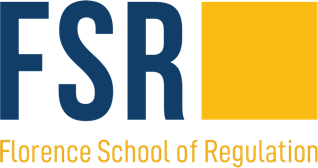European strategy on sustainable and smart mobility: what will be the role of economic regulation?
The paper “European strategy on sustainable and smart mobility: what will be the role of economic regulation?” will be presented at the 10th FSR Annual Conference (10-11 June, 2021).
ABSTRACT:
Within the context of serious health emergency that has severely affected the entire world in the last year, the strategic role played by some sectors that are decisive for the stability of the country-systems, such as transport, has become very evident.
In the recent definition of the new European industrial strategy, particular attention has been paid to sustainable and intelligent mobility and to automotive, aerospace, rail and naval industry, to ensure, through research and innovation, infrastructure investments and incentives, the transition towards a safe, sustainable, accessible and resilient mobility.
The European strategy on sustainable and smart mobility will be the guideline on which the global transport system must develop. The policy strategy for the transport sector includes a program of actions, which will be developed on two different fronts: on the one hand, the Green Deal, since transport contributes to climate neutrality by 2050 with reduction of CO2 emissions and mitigation of sources of pollution, and, on the other hand, the Digital Agenda, since the opportunities offered by digitization and automation allow for a better connection between different modes and an optimization of the transport system. The funds that countries will be able to receive thanks to the instrument of the Next Generation Eu will have to ferry countries towards that ecological and digital transition, which until today has not been effectively implemented.
In this perspective, what will be the role of regulation? This paper aims to investigate the specific regulatory tools that European regulators, with special reference to the Italian case, may employ to improve decarbonisation and digitalisation, while safeguarding non-discrimination and level playing field between operators.
First, a recognition of policy measures for transport and mobility sector planned in the Italian Recovery and Resilience Plan is proposed, also by considering comparable strategies identifiable in Recovery Plans developed by other selected European States.
The main findings of the proposed analysis emphasize the need of a consistent use of regulatory tools/models stemming from adequate analysis of mobility demand needs (undisputedly multimodal) in the next future and a systematic monitoring of (projected) infrastructures/services performance, to be measured by appropriate KPIs. This proposed approach may respond to the emerging challenges, increasing both the effectiveness of actions and strategies and the ability to reach objectives of sustainability and resilience.








